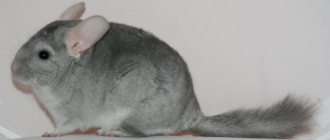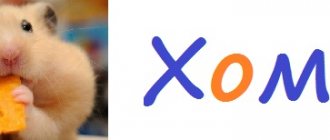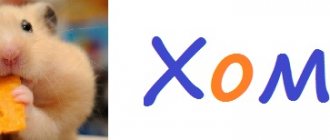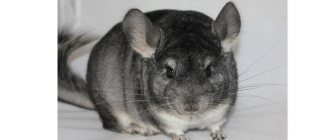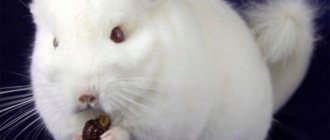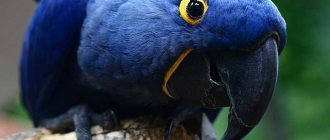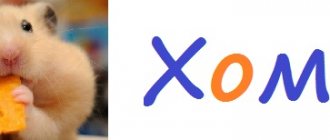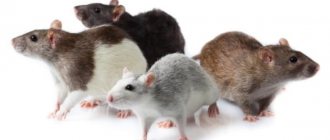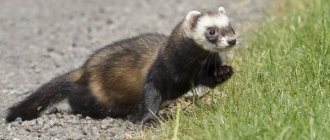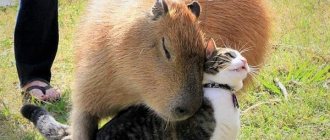03/24/2021 11,445 Chinchillas
Author: Olga
So that the chinchilla could survive in its natural habitat, nature gave it fur of modest colors. The most recognizable color of a chinchilla's coat is white on the tummy, gray on the back and sides. This is the basic color, the so-called standard. Shades from light ash to graphite are the framework within which this gray classic is designed. The breeders decided to change the scenario of nature and the chinchillas themselves, as they were a century ago.
[Hide]
One is gray, the other is white - colors
Experiments on crossing individuals have been ongoing for several decades in order to obtain skins of extraordinary beauty. The result of this work was such new shades as violet, diamond, sapphire, ebony...
Let's figure out exactly what shades these and other, no less spectacular, names encode. Let's find out who the degu and the Siberian chinchilla are. Does Siberian coloring even exist? What does the color of a degu look like? But before we answer these questions, let's talk about the basic gray color.
Strictly speaking, what we call “gray”, meaning the color of a wild rodent, is actually a more complex, three-color color. Just imagine a hair pigmented from tip to root with black, white and gray. It is very difficult to notice the zonality of coloring, because these hairs are located extremely close to each other.
The three-level coloring of the hairs, invisible to the eye, creates an amazing optical effect. – Depending on the depth of black, the purity of white and the shade of gray, the result is fur colored gray with varying degrees of intensity.
The highlight of the color is the silver tint or the so-called veil. These are the short-tailed chinchilla and the long-tailed chinchilla. – This is the name of two species of rodents of the chinchilla family. And the colors that these chinchilla breeds have in nature are standard.
The standard color has four types. Each type corresponds to the degree of color saturation: moderately dark standard, dark standard, extra-dark standard and medium standard. The most valuable is considered to be an individual of the extra-dark standard color.
The restrained beauty of the wild chinchilla is challenged by its domesticated relatives. They are expanding the number of species of rodents in the chinchilla family. And belonging to one or another depends not on the length of the tail, but on the color.
Popular colors of chinchillas
So, today many individuals of various stripes have been bred, the most popular of which are:
- White Wilson. Wilsons have several types: from milky to dark silver. All Wilsons have black eyes and a white tail tip. Two white Wilsons are not planted because two Wilsons have little chance of producing viable young.
- Pastel. Varieties of colors: light pastel, dark pastel, extra-dark pastel, medium pastel. Pastel colored animals darken with age.
- Black velvet. These animals have a white belly, black back and sides. The muzzle of the animal Black Velvet is also black. The more clearly the color contrast is manifested, the higher the individual is valued. Wilsons are often chosen as a pair for Black Velvet. And like the Wilsons, two Black Velvets are not planted together.
- Ebony. The ebony gene affects the degree of coloration of the tummy. If the animal's belly fur matches the color of its main fur, then it is real ebony.
- Homobeige. Homobeige fur is distinguished by uniform coloring. Homobeige animals have pink ears.
- Heterobeige. Unlike homobeige, heterobeige coats are colored unevenly: the tips of the hairs, like the undercoat, are darker than the main tone.
- Degu. Degu is a dwarf chinchilla. In nature, degus “wear” brown fur coats with a yellowish or grayish tint. It doesn't sound as impressive as, say, sapphire and diamond. And it doesn’t look as radical as, for example, an albino. However, breeders liked the small degu chinchillas. They try to recreate the degu color by crossing individuals of different colors.
Possible variations that result from crossing
When crossing animals of different colors, different colors are obtained. The number of possible options is so large that it is simply impossible to list them. Among them are White Velvet, Heteroebony, Homoebony and others.
Rare and spectacular chinchilla colors
Rare colors of rodents of the chinchilla family are:
- Sapphire. A blue chinchilla with a pearly white belly and pink ears: meet Sapphire. Individuals of the Sapphire color have low viability, so they are rare in their pure form.
- Royal Persian Angora. This is a long-tailed chinchilla, whose colors can be any. The most valuable types of Royal Persian Angoras are diamond and sapphire. The “royal” feature of Angoras is their long, beautiful hair. Thanks to their rich wool, Royal Angoras, even of standard color, look luxurious.
- White and pink coats belong to animals with beige and white genes. These genes make themselves felt in different ways, which is why there are several subspecies of pink and white colors. So, the white-pink color is both white, with beige marks, and beige, with white spots. But no matter what subspecies the white-pink color is classified as, the color of its owner’s ears will always be pink. To produce pink and white cubs, both the female and the male must be carriers of four genes at once. This is why white and pink colors are not common. Breeders really like individuals of this color, because the white and pink shade has a royal look!
- Violet. Animals of this color do not always have purple fur. The fur coat can be gray or purple. But a shade of violet is always present in the pigmentation of the nose. In order not to lose the violet gene, violet-colored individuals are planted exclusively with each other. However, sometimes breeders deviate from this rule, breeding individuals in shades of violet and black velvet.
So who is the Siberian chinchilla? Having listed a large number of colors, we still haven’t met the Siberian. It turns out that the Siberian chinchilla is a breed of cat. Attempts to find a “Siberian” shade (or anything else “Siberian”) in rodents of the chinchilla family are in vain.
But Siberian cats “borrowed” their zone-colored hairs from rodents. The surprisingly soft fur of Siberian cats added similarity to animals from different orders.
Main differences between the species
In total, there are 2 types of chinchillas found in nature - short-tailed and long-tailed. They have absolutely the same habits and character. And they differ only in appearance:
- The long-tailed chinchilla is characterized by higher fertility. It is found in Chile, in the mountain ranges located on the Pacific coast. It is further divided into 2 subspecies – mountain and coastal. Mountain animals live exclusively on rocks, at an altitude of 3-5 thousand meters above sea level. Coastal ones do not rise above 2 thousand meters.
- The habitat of the short-tailed chinchilla is Chile, Argentina, Bolivia. They live only high in the mountains. Therefore, they have thicker, dense fur, which is why they are on the verge of extinction. They also differ from their long-tailed relatives in their stocky body, short neck and strong head. It is very rare to encounter a short-tailed chinchilla in its natural habitat.
All other species were bred artificially using breeding work with long-tailed chinchillas. The result is about 100 breeds, which differ mainly in color. And only 2 varieties have several more distinctive features:
- Angora chinchilla . It differs from all other species in its fluffy long fur and spreading tail. It also has a slightly flattened muzzle. The most expensive breed, since the necessary characteristics are not always inherited during breeding. And only experienced breeders are able to produce long-haired babies.
- Dwarf chinchilla . The main difference is the size. If ordinary chinchillas weigh 600-800 g, then dwarf chinchillas weigh 300-400 g. Otherwise, they are similar to the rest of their relatives.
It is worth noting that dwarfism is not the result of the work of breeders, but a natural mutation. Accordingly, the cubs of such chinchillas are born of normal sizes. As a result, dwarf females often die during childbirth. Therefore, these babies are absolutely not suitable for breeding.
Genetic color calculator for chinchillas
The colors of chinchillas are very diverse. How to breed an individual of the desired color? Understanding the complex interweaving of pet genes can be quite difficult. A tool such as a genetic calculator comes to the aid of a chinchilla breeder. Using a genetic calculator, you can determine which color offspring is most likely to be born.
So, using this calculator, you can calculate that a Homoebony mother and a Homoebony dad will have almost 64% probability of producing Gomoebony cubs. There is a 22% chance that their babies will have the Extra-Dark Ebony color. The possibility of these parents having Ebony-dark babies is 10%. And in only 4% of cases, such a couple gives birth to Ebony-light and Ebony-medium cubs.
Video “Chinchilla colors”
This video features White and Pink Chinchilla, Angora Chinchilla, Beige Chinchilla, White Wilson. Here you can also see individuals of such colors as Brown Velvet, Homoebony, Homobeige, White Velvet, White Sapphire. The authors of the video also did not forget about the colors Albino, White Violet, Blue Diamond, Pastel, Ebony, Violet, Homobeige Sapphire, Sapphire, Black Velvet.
Was this article helpful?
Thank you for your opinion!
The article was useful. Please share the information with your friends.
Yes (75.00%)
No (25.00%)
X
Please write what is wrong and leave recommendations on the article
Cancel reply
Rate the benefit of the article: Rate the author ( 5 votes, average: 4.80 out of 5)
Discuss the article:
Eating and bathing
Since a chinchilla at home, as in its natural environment, must eat hay, it will need an additional feeder for this ingredient.
For a full life and beautiful fur, chinchillas need a bath. The chinchilla bathes in special sand made from crushed volcanic stone. This procedure is necessary for the animal to clean its fur.
You should not use regular sand for bathing chinchillas, because it will damage the animal’s fur.
The bath cannot be kept in the cage all the time; it must be left for half an hour; this time is enough for the animal to perform the procedure, otherwise the chinchilla’s skin will become dry.
Since the process of bathing chinchillas is very interesting, a transparent bath or an ordinary three-liter jar can be an ideal option for observing this cute animal.
Another rule for keeping chinchillas is related to the fact that chinchillas are primarily rodents, therefore, like all rodents, the animal has an instinct that requires gnawing something.
For this reason, experts recommend placing special hard pebbles in the animal’s cage, on which the animal will grind its teeth.
In addition, the cage should contain wooden sticks or toys, as well as mineral or chalk bars that the chinchilla will happily chew on.
